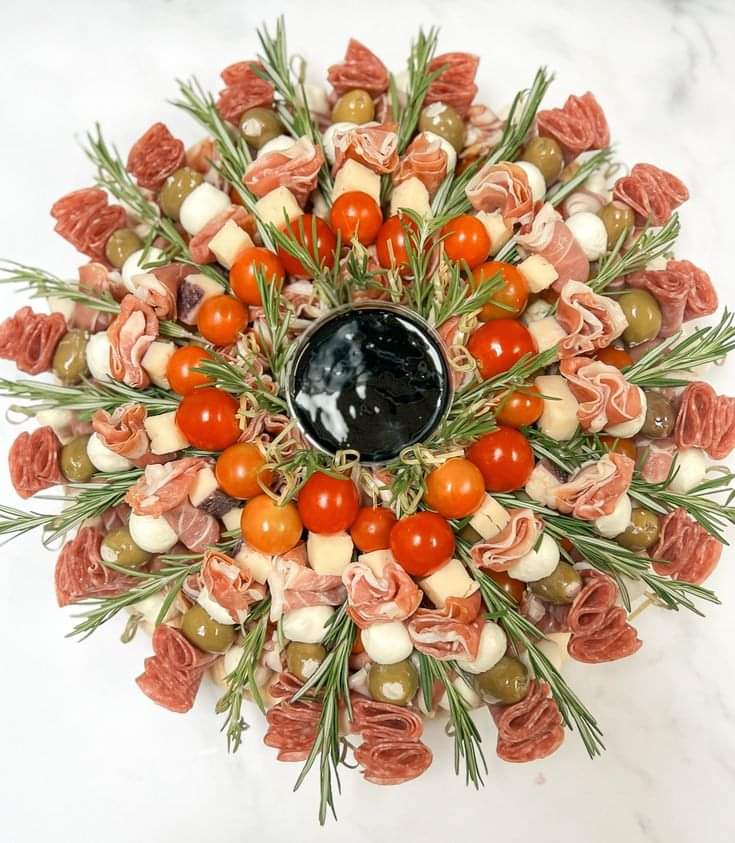The Ultimate Guide to Antipasto: Elevate Your Appetizer Game
Introduction
Antipasto, the classic Italian appetizer, is a feast for the senses, tantalizing taste buds and stimulating conversation. In this comprehensive guide, we’ll explore everything you need to know about creating the perfect antipasto platter, from selecting the finest ingredients to arranging them artfully on a serving dish.
What is Antipasto?
Definition: Antipasto, which translates to “before the meal” in Italian, is a collection of cured meats, cheeses, marinated vegetables, olives, and other savory bites served as an appetizer before the main course.
Origin: Originating in Italy, antipasto is a traditional part of Italian cuisine, often enjoyed as a prelude to a leisurely meal with family and friends.
Components of an Antipasto Platter
Creating a balanced antipasto platter requires a variety of flavors, textures, and colors. Here are the essential components to consider:
Cured Meats
| Meat | Description |
|---|---|
| Prosciutto | Thinly sliced, dry-cured ham with a delicate flavor and melt-in-your-mouth texture. |
| Salami | Dry-aged sausage available in various styles, such as Genoa or soppressata. |
| Coppa | Pork shoulder seasoned with spices and herbs, then cured and air-dried to perfection. |
Cheeses
| Cheese | Description |
|---|---|
| Parmigiano Reggiano | Aged Italian cheese with a nutty, complex flavor and granular texture. |
| Mozzarella | Soft, fresh cheese with a mild, creamy taste, perfect for pairing with tomatoes. |
| Gorgonzola | Creamy blue cheese with a tangy flavor and rich, buttery texture. |
Marinated Vegetables
- Marinated Artichokes: Tender artichoke hearts infused with olive oil, garlic, and herbs.
- Roasted Red Peppers: Sweet, smoky peppers roasted to perfection and marinated in olive oil.
- Marinated Mushrooms: Earthy mushrooms soaked in a savory marinade of balsamic vinegar and herbs.
Olives
- Kalamata: Rich, fruity olives with a deep purple hue and a tangy flavor.
- Castelvetrano: Bright green olives with a buttery, mild taste and a crisp texture.
Tips for Building the Perfect Antipasto Platter
- Variety is Key: Aim for a diverse selection of meats, cheeses, and accompaniments to appeal to a range of tastes.
- Presentation Matters: Arrange your components thoughtfully on a large platter or wooden board, paying attention to color contrast and visual appeal.
- Temperature Considerations: Serve your antipasto platter at room temperature to allow the flavors to shine.
Frequently Asked Questions
Q: Can I prepare my antipasto platter in advance?
A: Yes, many components of an antipasto platter can be prepared ahead of time, such as marinated vegetables and cured meats. Just be sure to assemble the platter shortly before serving to ensure freshness.
Q: How do I pair wines with my antipasto platter?
A: When selecting wines to accompany your antipasto platter, opt for versatile options that complement a range of flavors. Light-bodied wines like Pinot Grigio or Prosecco pair well with the delicate flavors of cured meats and cheeses, while bold reds like Chianti or Cabernet Sauvignon can stand up to richer, more robust flavors.
Conclusion
In conclusion, mastering the art of antipasto is a delightful journey that allows you to showcase the finest ingredients and flavors of Italy. By following the tips and guidelines outlined in this guide, you can create a stunning antipasto platter that delights the senses and sets the stage for a memorable dining experience. So gather your ingredients, unleash your creativity, and prepare to impress your guests with an antipasto extravaganza that will leave them craving more. Buon appetito!

